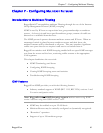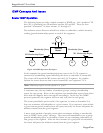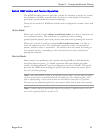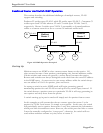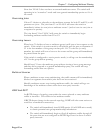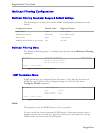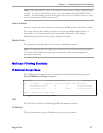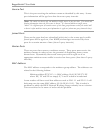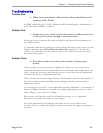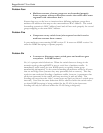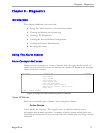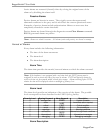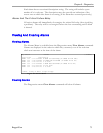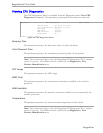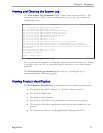
Chapter 7 – Configuring Multicast Filtering
Troubleshooting
Problem One
• When I start a multicast traffic feed it is always distributed to all
members of the VLAN.
Is IGMP enabled for the VLAN? Multicasts will be distributed to all members of
the VLAN unless IGMP is enabled.
Problem Two
• Computers on my switch receive the multicast traffic just fine, but
I can’t get the stream through a connected router.
Is the port used to connect the router included in the Router Ports parameter of
the VLANs menu?
To determine whether the multicast stream is being delivered to the router, run the
Ethernet Statistics menu View Ethernet Statistics command. Verify that the
traffic count transmitted to the router is same as the traffic count received from
the multicasting source.
Problem Three
• The video stream at one of my end stations is of pretty poor
quality.
Video serving is a resource-intensive application. Because it uses isochronous
workload, data must be fed at a prescribed rate or end users will see glitches in the
video. Networks that carry data from the server to the client must be engineered
to handle this heavy, isochronous workload.
Video streams can consume large amounts of bandwidth. Features and capacity of
both server and network (including routers, bridges, switches, and interfaces)
impact the streams.
You should not exceed 60% of the maximum interface bandwidth. For example, if
using a 10 Mbps Ethernet, you should run a single multicasting source at no more
than 6 Mbps, or two sources at 3 Mbps.
Router ports will carry the traffic of all multicast groups, so it is especially
important to consider these ports in your design
Note that multicasting will definitely introduce latency in all traffic on the
network. Plan your network carefully in order to account for capacity and latency
concerns.
RuggedCom
69



